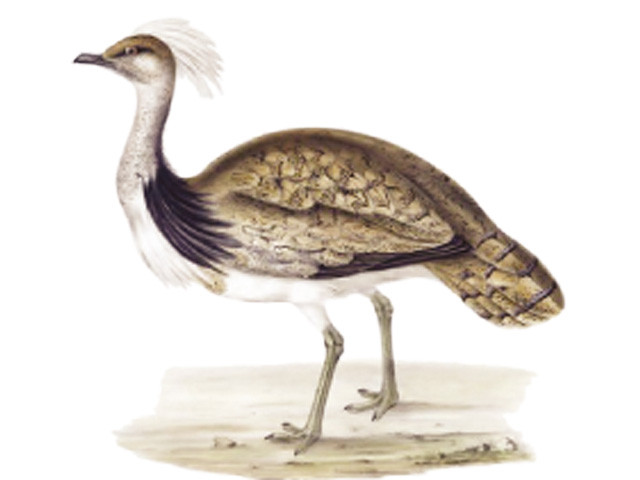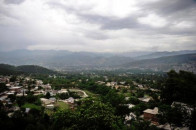Houbara bustards have started arriving
Experts say about 25,000-35,000 houbaras enter Pakistan as temperatures drop below freezing point in areas.

The dry areas in Khyber-Pakhtunkhwa (K-P), Punjab, Sindh and Balochistan are the winter habitats of the migratory bird where sufficient food is available, Dr Mumtaz Malik, former Chief Conservator, Wildlife Department K-P, said on Sunday.
“A large number of migratory birds arrive in Pakistan from Mongolia, Siberia and Central Asian Republics (CARs) in November and December and return in March and April,” he said.
Experts say about 25,000-35,000 houbaras enter Pakistan from the Central Asian states and China’s Sinkiang province, as the temperature drops below freezing point in those areas.
Covering about 5,5O0 kilometers from Siberia and Central Asian Republics, the bird takes only five to seven days, flying at a height of 4,730 meters, crossing Chitral, Nowshera, Kohat, Lakki Marwat and stay in Dera Ismail Khan, Dera Ghazi Khan and onwards to the Cholistan desert.
Dr Malik said that a scientific survey was needed to find out the accurate number of houbaras that arrive in Pakistan for which financial resources are required.
Houbara is a very sensitive bird and does not use the route again if they sense any danger on their way during the first journey. In case the houbara looses its mate it takes three to five years to find a new one. The population travels in groups with a leader. Once they loose their leader, the deputy guides the group to reach its destination.
Scientifically known as macqueenii, the districts of D.I. Khan, Tank, Rahim Yar Khan, D.G. Khan and arid areas of southern Punjab provides rich diversity of flora, fauna, insects and weeds to the endangered specie. The houbara eats flora, insects and earthworms.
Dr Malik said the houbara population is declining due to illegal hunting and destruction of its habitats. The Asian houbara could become extinct within 20 to 30 years if unchecked hunting, illegal trapping and trading of the bird continue.
The rapid increase in population is also affecting the birds’ habitat and breading grounds. “Interestingly, rivalry between the houbara newborns is also one of the factors of their gradual decrease,” Malik said.
“Houbara gives birth to only two chicks a year, but the elder kills the younger one due to the fear of sharing food,” he said.
According to the experts, if the present situation continues, the bird will become extinct by 2030.
Experts estimate that the natural death rate of the endangered birds is 32.8 per cent while death due to hunting is more than 68.1 per cent.
The rate of hunting has reached nearly 20.8 per cent, up from the acceptable 7.2 per cent. Dr Malik said the number of NGOs interested in preserving the endangered species have been on the decline.
The former wildlife chief recommended the need for community involvement through financial and other incentives in the preservation and protection of the houbara.
Published in The Express Tribune, November 22nd, 2010.



















COMMENTS
Comments are moderated and generally will be posted if they are on-topic and not abusive.
For more information, please see our Comments FAQ